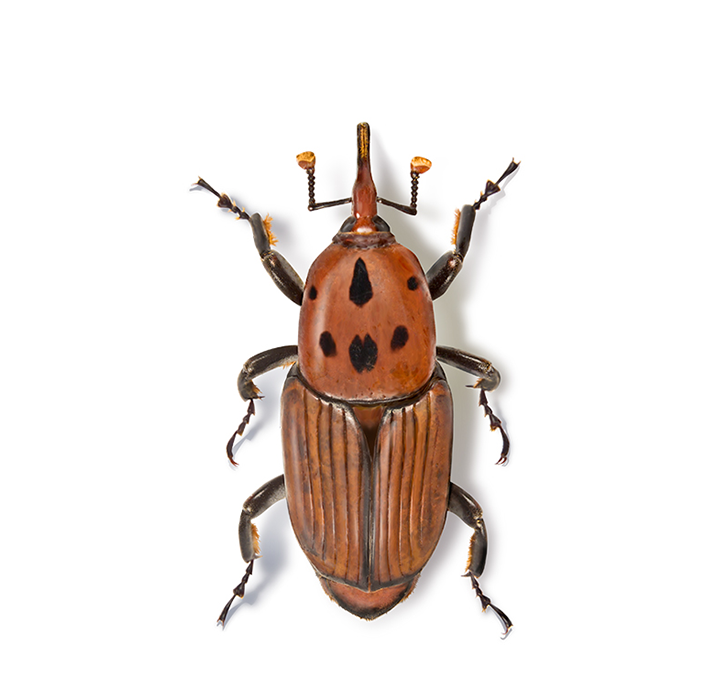Plants of the palm genus of the family palm and persimmon
Adults are reddish brown and cylinder and 35 mm long and 10 mm wide. The length of the head and proboscis is 1/3 of the total length of the body.

Host Plants
Plants of the palm genus of the family palm and persimmon
Adults are reddish brown and cylinder and 35 mm long and 10 mm wide. The length of the head and proboscis is 1/3 of the total length of the body.
Type of Damage
Larvae do the damage. The young larvae, that hatch from eggs, enter the trunk, where they feed on soft fibrous tissue and make tunnels. Since the larva spends its life completely inside the trunk, at the beginning it is very difficult to detect the pest and the damage it causes. As a result of the pest feeding on the growth points of palm trees, a yellowish brown sticky liquid is seen through small holes on the trunk and the parts where the leaves attach to the trunk. Over time (about 2-3 years later), yellowing, wilting and drying of the leaves are observed.
Monitoring
One trap per hectare is hung in parks, gardens and nurseries with palm trees. For palm trees in rows on roadsides and middle sidewalks, a pheromone trap is hung every 1 km.
4-6 traps are hung per hectare in parks, gardens and nurseries with palm trees. For trees on the roadside, a pheromone trap is hung every 100 m. The traps are hung on a solid stake at least 6 meters from healthy trees, in landscaping areas that have been planted as an ornamental plant and are thought to be contaminated. If the tree is damaged and starting to dry out, the trap can be hung on the tree trunk.
Recommended Control
Types for This Pest